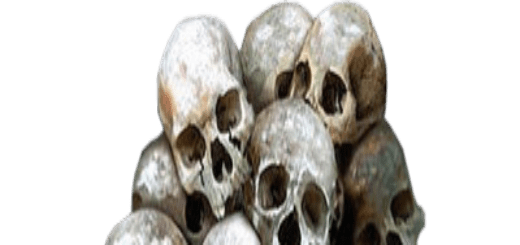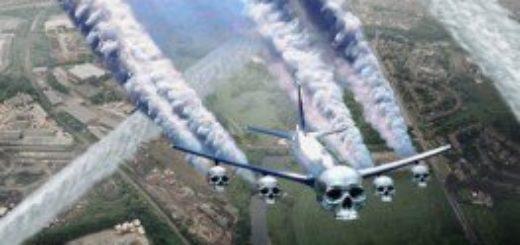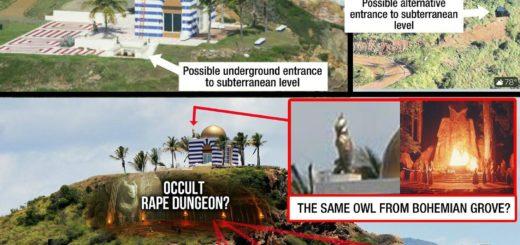Largest Earthquake in Decades Hits South’n CA
| We need help to continue our efforts. Largest earthquake in decades hits Southern California, measuring 6.4 magnitude JULY 4, 2019 Earthquake’s and RESERVOIR inducement – Is Rothschild involved? See the REPORT – Below the California Quake News. . . Developing Story Near the China Lake Naval Air Weapons Station CHECK THIS OUT your earthquake was a nuke under groundNuclear Explosion | 6.6 (now 6.4) magnitude S. California earthquake on July 4, 2019 https://www.latimes.com/local/lanow/la-me-earthquake-california-shake-quake-20190704-story.html The largest earthquake in two decades rattled Southern California on Thursday morning, shaking communities from Las Vegas to Long Beach and ending a quiet period in the state’s seismic history. Striking at 10:33 a.m., the magnitude 6.4 temblor was centered about 125 miles northeast of Los Angeles in the remote Searles Valley area near where Inyo, San Bernardino and Kern counties meet. It was felt as far away as Ensenada and Mexicali in Mexico, Las Vegas, Phoenix, Reno and Chico, Calif. A 5.4 magnitude aftershock awoke many Friday morning.Earthquake’s and RESERVOIR inducement – Is Rothschild involved? See the REPORT – BelowKeep in mind Southern California Edison is a Rothschild LLC and company operated utility. Page 49 Excerpt Kern Gorge Powerhouse (Kern River No. 1), built from 1902-1907 by the Kern River Company and now operated by Southern California Edison-when first online this was the largest hydroelectric facility in the world, providing electric power for Los Angeles. Steep rock debris chute above it across the river. Excerpts from page 44 2011 Friends of the Pleistocene Field Trip Stop 1-1e: Scope of the seismic hazard characterization of the Kern Canyon fault for the Isabella Project, California The KCF is now judged as a capable fault per Corps criteria, and an active fault per California Division of Safety of Dams criteria (Fraser, 2001). The Corps classifies the Auxiliary dam in Dam Safety Action Class (DSAC) 1, which is the highest rating, based on a high probability of failure and severe consequence from failure. Because the fault extends beneath the right abutment of the Auxiliary Dam, assessing fault activity and determining the likely amount of coseismic rupture are critical for dam safety considerations. Information on fault activity and segmentation is essential for estimating maximum earthquake magnitude and conducting strong ground-motion analyses, and data on the timing of large paleoearthquakes on the Kern Canyon fault are critical for calculating probabilistic strong ground motions. This investigation provided a basis for characterizing seismic hazard at the Isabella dams, and for understanding regional seismic hazard for the entire southern Sierra Nevada. As a result of the recognition of fault activity and the possibility of fault rupture beneath the Auxiliary dam, detailed information was developed on the location, width, and distribution of expected coseismic deformation specifically at the Auxiliary dam. The primary purposes of our investigation were to (a) develop well-constrained seismic source characteristics for the KCF for use in analyses of strong ground motions for the dams and appurtenant structures, and (b) characterize potential fault-rupture hazards at the Auxiliary dam. Our effort built upon previous seismic characterizations based on regional or preliminary information (e.g., URS, 2006) and provides the first clear demonstration of recent fault activity and the first quantitative evaluation of the location, width, and expected amount of coseismic displacement beneath the Auxiliary dam. The scope of work included: (1) evaluating available pre-existing geologic and geophysical data and Corps project files, (2) geomorphic mapping of the entire Kern Canyon and Breckenridge faults from aerial photography and LiDAR-derived imagery, (3) paleoseismic trenching and/or shallow drilling at six sites north and south of Lake Isabella, (4) estimating numerical and relative ages of faulted and unfaulted deposits using radiocarbon, optically stimulated luminescence, cosmogenic exposure, and relative soil-profile development analyses, (5) analyzing instrumental seismicity and regional seismotectonic models, (6) developing reasonable earthquake rupture scenarios and determining maximum earthquake magnitudes, and (7) providing seismic source characteristics for DSHA and PSHA calculations of strong ground motions. These office- and field-based investigations were synthesized developed a new seismic source characterization for the KCF, essentially starting from scratch because of an absence of well- constrained paleoseismic data. The geologic field analyses were conducted at various levels of technical detail according to site-specific geologic conditions, in order to develop well- constrained information along the entire 135-km- long KCF, as well as the Breckenridge fault at the southern end of the KCF. For example, in readily accessible areas containing well-bedded alluvial stratigraphy overlying the fault, we completed detailed paleoseismic trenching and shallow drilling to target specific geologic features indicative of past earthquakes. On the other hand, parts of the KCF that extend through rugged, high-mountain topography (e.g., in the Golden Trout Wilderness) are not accessible for paleoseismic trenching or drilling, and called for acquisition and analysis of detailed LiDAR-based topographic data and detailed geologic and geomorphic mapping of specific fault-related features. As the investigation progressed, we adapted data collection activities to accommodate the evolving understanding of fault characteristics, various logistical restrictions (e.g., wilderness permits), and the need to balance expenditures with anticipated results. In our opinion, this comprehensive investigation is unusual not only because it characterizes a fault for which very little was known, but also because the fault is long (over 140 km), relatively active (even by California standards), and accommodates a significant amount of deformation across a large part of the state (the southern Sierra Nevada). In addition to developing new data on the KCF as a seismic source, the results of this analysis are useful for understanding regional seismotectonics, defining the distribution of paleoseismic rupture on a relatively long normal fault, and understanding patterns of alluvial and glacial deposition during and after the late Pleistocene-Holocene climatic change in the southern Sierra Nevada. Possible fault-rupture segments are interpreted using the results obtained from the paleoseismic investigations, the geomorphic and geologic mapping, and the analysis of instrumental seismicity. The paleoseismic evidence suggests both single- section and longer, multi-section rupture behaviors. The available information was used to assign preliminary weightings for nine possible rupture scenarios, which can be used in the deterministic seismic hazard analysis (DSHA) and the probabilistic seismic hazard analysis (PSHA) calculations. The segmentation models suggest that 55 percent of the earthquakes on the KCF involve ruptures that are more than 50 km long and that continue beneath the Auxiliary Dam. Such ruptures are probably in the range of moment magnitude (M) 6.5 to 7.5 and will likely generate surface faulting beneath the Auxiliary Dam embankment. Of the scenarios that involve rupture of the fault section that passes beneath the Auxiliary Dam, the weighted mean magnitude is about M6.7. It is judged that the Maximum Credible Earthquake (MCE) on the KCF is M7.5, but an earthquake of this magnitude is an extremely unlikely event. http://www.fop.cascadiageo.org/pacific_cell/2011/FOP% 202011%20Guidebook%20Southern%20Sierra.pdf |

















